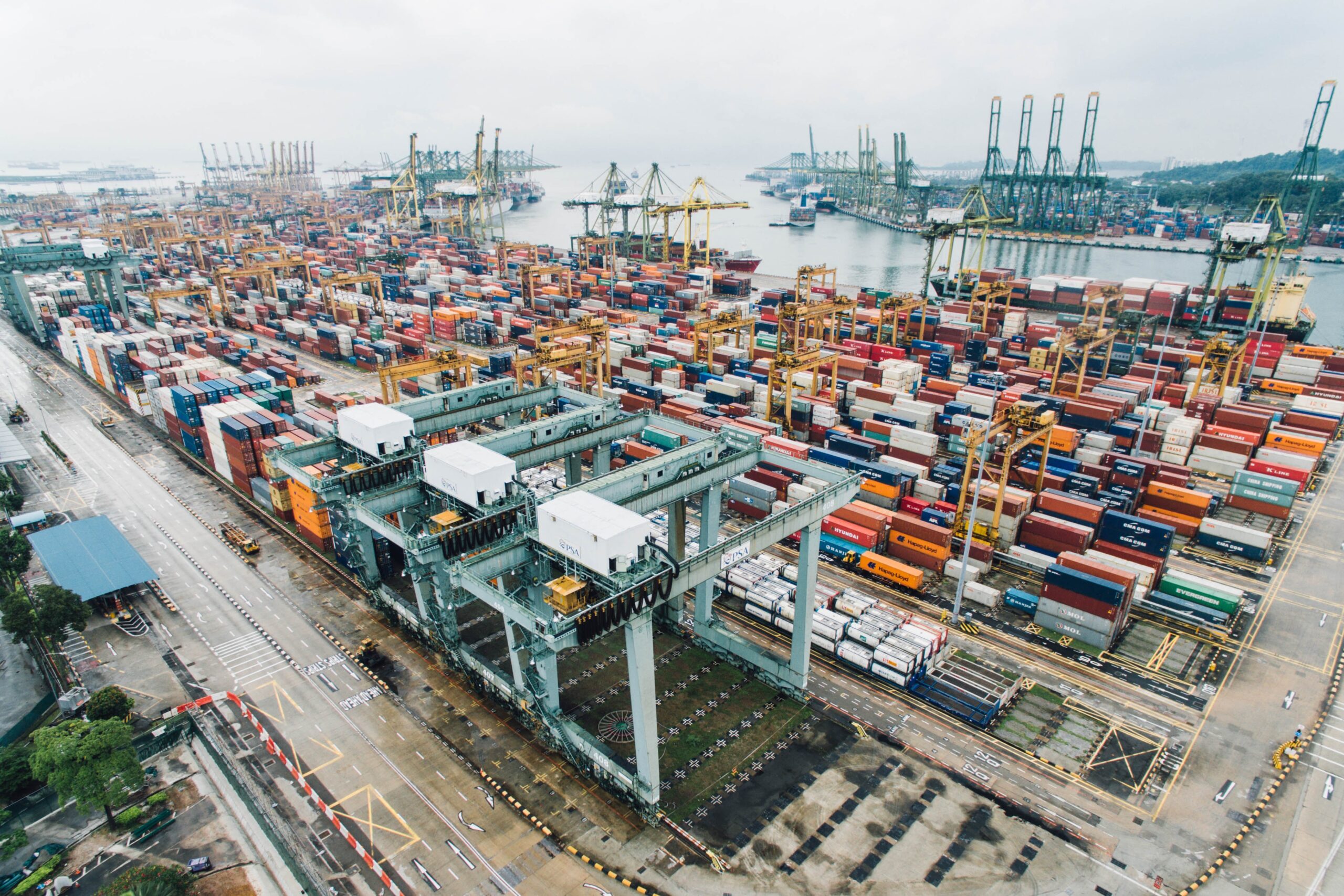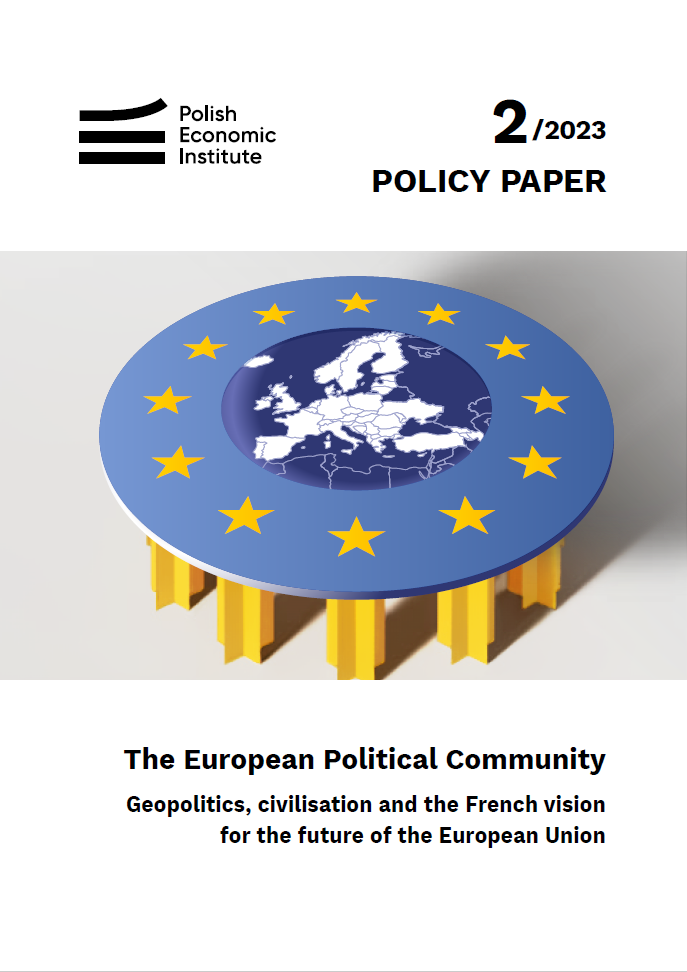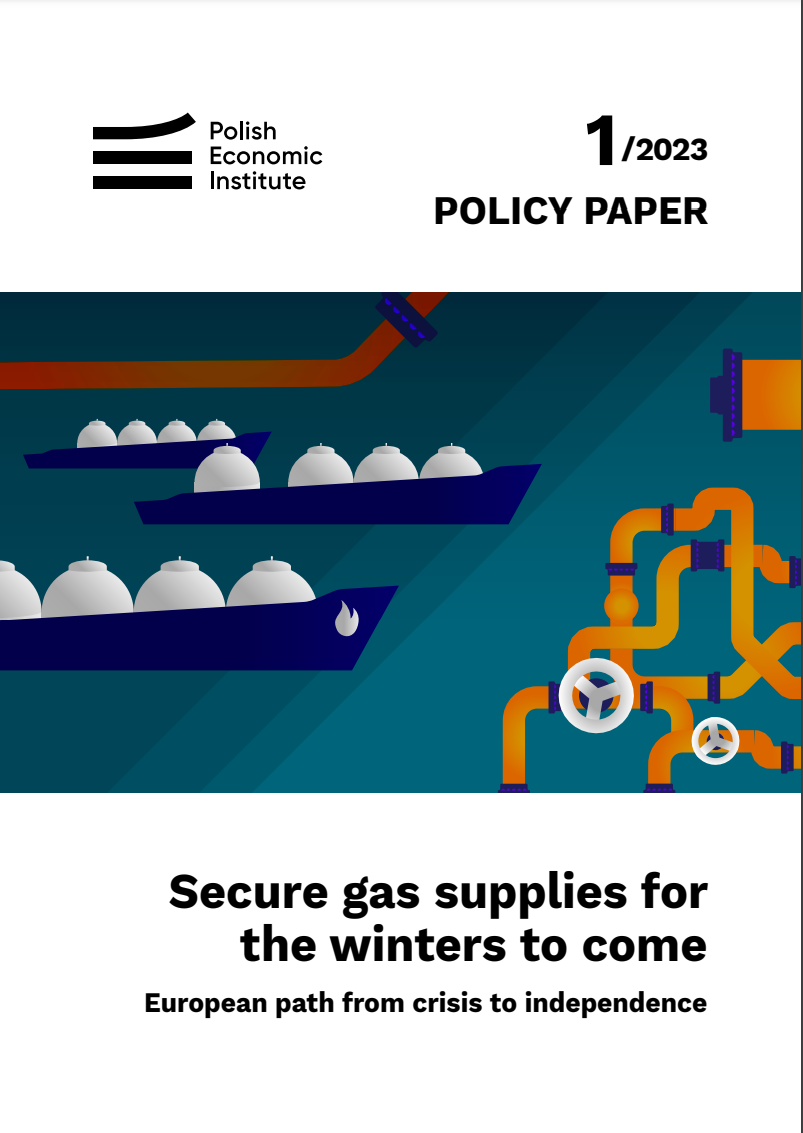The Polish Economic Institute analysed the predictions of energy sector experts from 23 EU Member States about meeting the targets of EU climate and energy policy. The least concern is the ban on the sale of combustion passenger cars before 2035 - more than 70 % of those surveyed believe this is achievable. At the same time, only 44 % of the experts surveyed believe that the EU will have achieved climate neutrality by 2050. The biggest doubt is about meeting the target for the share of RES in the EU's energy mix in 2030 - 56 % of them believed that it would not be possible to meet this target by that date. Fewer than one in three experts (29 %) from Central Europe were confident that their country would meet the CO2 reduction targets set out in the Effort Sharing Regulation (ESR). The most controversial topics the European experts disagree on are the electrification of district heating and the future of nuclear power. These are the main conclusions of the Polish Economic Institute's report entitled "Challenges of the Fit For 55 package: EU expert feedback on the targets of the energy transition."
65% of war refugees who came to Poland from Ukraine are in employment. The employment rate is currently the highest among Organisation for Economic Co-operation and Development (OECD) countries. Research conducted by the Polish Economic Institute shows that Ukrainian refugees face various challenges in the Polish labour market and sometimes experience unequal treatment. In several of the industries surveyed that do not require specialised qualifications, employers respond less frequently to CVs sent by Ukrainian women compared to those sent by Polish women. The difference of nearly 30 % is a signal of potential discrimination at the initial stage of recruitment, according to the latest report by the Polish Economic Institute 'Refugees from Ukraine in the Polish labour market: opportunities and obstacles'.
Global trade shifts triggered by the pandemic, the Russian invasion of Ukraine and the trade rivalry with China have prompted the EU to take its own measures to support domestic industry. Annual spending on state aid to companies increased by 188 % between 2020 and 2021. Aid from Germany and France alone accounted for as much as 77 % of all notified state aid to companies in the EU between March 2022 and January 2023. However, new measures are limited at EU level, with more transfers between existing funds and plans to mobilise private funds. Efforts to maintain the EU's global competitiveness threaten cohesion and competitiveness within the EU. For example, Central and Eastern Europe did not receive any funding under the third round of allocating funds for low-carbon industry from the Innovation Fund. Support for green industry and the cohesion of the single market is analysed by the Polish Economic Institute in its report 'The Single Market in a Time of Storm: The struggle to maintain competitiveness and cohesion in an era of growing protectionism.'
On 14-15 December, EU leaders will decide whether to start accession negotiations with Ukraine. In this context, Kyiv faces a number of challenges, as set out by experts from the Polish Economic Institute and the Ukrainian Centre for Economic Strategy in a joint report entitled Stronger Together: Present and Future Challenges on Ukraine's Road to EU Integration. In the short term, the greatest challenge is to ensure stable sources of financing, especially for significant needs linked to conducting military operations. In the medium term, Ukraine will need to overcome infrastructure problems and attract investments. In the long term, the primary change will be successful reforms that will build strong institutions that will ensure the country’s socio-economic development and allow Ukraine to join the European Union.
We conducted a survey among prominent European economists on trade dislocation, economic globalisation trends and the future of Western currencies. According to our respondents, some reshoring is excepted to occur, potentially reducing the EU's reliance on Chinese imports, though this might come at a cost. While the economists foresee a slight decrease in the share of the EUR and USD in global reserves, complete de-dollarisation is not expected. The EUR's position seems more vulnerable than that of the US dollar.
The French project of the European Political Community (EPC), including EU member states and 17 other countries in Europe and Eurasia, excluding Russia, has significant political and economic potential. The participation of EPC economies in the global GDP would be 23.5 percent. Currently, this area is home to 689.5 million people, which constitutes 8.7 percent of the world's population. The GDP per capita of countries outside the EU that would be part of the EPC is 88.8 percent of the EU average. The Polish Economic Institute, in its report titled "European Political Community: Geopolitics, Civilization, and the French Vision for the Future of the European Union," analyzes the French idea of the geopolitical and civilizational opening of the EU to other countries.
1 January 2023 marked 30 years since the establishment of the European single market, which Poland has been benefiting from for over 18 years. Poland derives significant economic advantages from European Union membership. If it were not part of the single market, Poland's GDP per capita would be 31% lower and amount to 60% of the EU average. In 2018, almost a quarter of the country’s GDP was indirectly or directly dependent on the EU, and the demand from end consumers in Germany alone generated 1.15 million jobs. These are the conclusions of the Polish Economic Institute’s report entitled How Poland benefits from the single market.
Russia’s invasion of Ukraine in 2022 has forced countries in the European Union to end their dependence on Russian gas. Although EU imports of gas (including LNG) increased by 37% in 2014-2021, after the invasion daily flows of Russian gas through pipelines to the EU fell sixfold within a year. Of the main gas markets in the EU, Poland — which was historically the most dependent on Russian supplies — managed to reduce its dependence on Russian imports to the greatest extent. Between 2014 and 2021, it reduced gas imports from Russia by 14% and, in Q1 2023, ended them completely. In its report Secure gas supplies for the winters to come. The European path from crisis to independence, the Polish Economic Institute analyses EU countries’ efforts to end their dependence on Russia and increase their energy security.
The Digital Economy and Society Index (DESI) is the main tool used by the European Commission to measure the level of digitalization in EU countries. Although Poland achieved a score of 40.5 out of 100 in the index, placing it 24th among EU countries, the development level of several indicators is approaching that of the classification leaders, including Finland, Denmark, and Estonia. Despite the DESI methodology making it very difficult for member states to make any progress in the ranking, Poland is among the countries that are catching up fastest with the leaders. Currently, the index is undergoing a major transformation as part of the implementation of the Digital Decade, a new EU digitalization strategy. Therefore, changes are necessary in DESI to ensure a more objective assessment of the level of digitalization in individual EU countries, as outlined in the report by the Polish Economic Institute, "How to Measure the Digital Decade - Recommendations for an Evolution of the DESI Index."
Over 1 million Ukrainians who sought refugee after Russia invaded Ukraine in February 2022 are currently in Poland. 80% of them believe that Polish society has a positive attitude towards them. However, Poles’ views on refugees’ situation is clearly changing. The percentage who believe that Ukrainian refugees are in need of assistance has fallen from 84% to 50% since the Russian. In its report Poles and Ukrainians — the challenges of integrating refugees, the Polish Economic Institute analyses Poles’ attitudes towards refugees from Ukraine.
The economic recovery in 2021 contributed to the consolidation of dependence on supplies from China and Russia by increasing imports from there. In 2018-2021, China's share in material consumption in the EU-27 grew by nearly 1%. At the same time, the process of moving production to other (cheaper or safer) countries, as well as bringing it home, has been visible in recent years. In 2021, FDI flows to developed countries increased significantly, compared to flows to developing countries. The total value of greenfield transactions grew by 15%, but fell by 50% in the case of China. FDI to developed countries rose by 134% in 2021 (y/y), according to the Polish Economic Institute’s report The new face of global trade. Are we dealing with reshoring?, which analyses the impact of the pandemic and the war in Ukraine on global production chains.
The Polish economy is at the bottom of the slowdown and inflation has peaked already. We expect inflation to slow down in the coming months and amount to 12.6% in 2023 as a whole. The Polish Economic Institute forecasts that GDP will grow by around 0.8% in 2023 and by 2.2% in 2024. Despite the clear slowdown, the situation on the labour market remains stable. These are the conclusions of the Polish Economic Institute’s “PEI Economic Review: Spring 2023”.
The European Union has been debating the shape of fiscal policy and debt for years. Polish Economic Institute and the Kiel Institute for the World Economy (IfW Kiel) asked leading EU economists about their opinion about future of the fiscal rules. Most economists believe that a reform proposed by the European Commission will help to stimulate public investments, which could facilitate green transition of EU’s economies. They do not put much faith in reducing public debt levels, though.
Since the beginning of Russia’s invasion of Ukraine, more than 1 million refugees have found refuge in Poland. It has been reflected in the setting up of new undertakings in Poland. 3,600 companies with Ukrainian capital and 10,200 Ukrainian sole proprietorships were established between January and September 2022. 75 per cent of the businesses surveyed started operating in Poland because their founders needed to earn money to support themselves and their families. At the same time, 66 per cent of them declared that they would continue to operate in Poland regardless of the situation in Ukraine. Those are the conclusions to be drawn from the report of the Polish Economic Institute entitled ‘Ukrainian companies in Poland since the start of the war in 2022’.
Germany has been one of Poland’s key trading partners for years. In 2018, nearly 10 per cent of Polish GDP relied on trade with Poland’s western neighbour, including more than 7 per cent generated by the demand from final customers over the Oder and another 2.6 per cent resulting from German exports of Polish value added. In its report entitled ‘Współpraca handlowo-inwestycyjna Polski z Niemcami’ (Poland’s trade and investment cooperation with Germany), the Polish Economic Institute analyses the trade balance of the two countries with regard to GDP generation and job creation, trade structure and mutual cooperation in the form of direct investment.
As late as 2020, 44 per cent of coal, 45 per cent of natural gas and 25 per cent oil imported to the EU came from Russia. In the energy transition vision adopted by the European Union in the Fit for 55 package, natural gas was meant to serve as a transition fuel. After Russia’s aggression against Ukraine and sharp increases in the prices of all energy raw materials, the model needed to be changed. In May 2022, the European Commission published the REPowerEU plan, assuming the diversification of gas supplies, increased energy production from RES and the development of the hydrogen and biofuel markets. At the same time, the European Commission estimates that the departure from Russian fuels will provide savings of around EUR 100 billion per year. In its policy paper entitled ‘The green transition in the shadow of the war’, the Polish Economic Institute prepared four potential scenarios of the impact of the war in Ukraine and the resulting energy crisis on the European Union’s climate policy, including the future development of the Fit for 55 package.
As calculated by the Polish Economic Institute, the climate cost of Russia’s invasion of Ukraine in the moderate emissions scenario will be 212.7 million tonnes of CO2 equivalent. This is as much as 6 per cent of the equivalent of all the EU’s greenhouse gas emissions in 2022 and 80 per cent of Poland’s annual direct CO2-eq emissions. In the same scenario, the potential climate cost of the invasion could be EUR 16.6 billion. Ukraine’s green recovery could enable as much as 115 million tonnes of CO2 emissions to be avoided and reduce the war’s climate costs by EUR 8.9 billion. A green recovery will also be necessary due to the fact that as much as 4000 MW of renewable energy sources, or 24 per cent of Ukraine’s installed RES capacity, may have been destroyed and damaged – according to the PEI report entitled ‘The climate costs of the Russian invasion’.
In 2019, Poland’s automotive production was EUR 45 billion, whereas the respective figure for the Visegrad Group exceeded a total of EUR 160 billion. Due to the planned legislative changes in the EU, the share in the Polish industry of the production of ICEV* parts to become unnecessary after the entry into force of a ban on the registration of internal combustion engine vehicles by 2035 will be 35 per cent; the expected loss of production value added in the traditional automotive sector in the V4 countries by 2035 can be EUR 22.8 billion, of which EUR 7.2 billion will be lost in Poland. However, the net balance of the automotive and battery production in the V4 countries by 2035 will be positive, at EUR 58.5 billion, whereas the respective figure for Poland will be EUR 16.9 billion. The development of battery production investments could increase the respective rates of GDP growth in the V4 countries and in Poland by 5.3 per cent and by as much as 2.6 per cent by 2035. Moreover, electric vehicle battery exports in the European Union will triple by 2030 – according to the PEI report entitled ‘The impact of the Fit for 55 package on the automotive industry in the Visegrad Group. Budgetary effects of more restrictive emission performance standards’.
Three main events affected the structure of the inflation basket: the COVID-19 pandemic, first in the spring of 2020 and then during the second wave, the energy crisis caused by Russia’s manipulation of the gas market and, more recently, its attack on Ukraine. Thanks to access to high-frequency data, the Polish Economic Institute has been able to estimate that in April 2020, during the spring lockdown, inflation in Poland may have been 1.25 pp. higher than the official measure. At the same time, during the escalating energy crisis in December 2021, the official CPI was overestimated by 0.34 pp. Poorer households were hit by inflation 0.23 pp. more than wealthier ones – according to the Polish Economic Institute’s report entitled ‘Calculating inflation in Poland during the COVID-19 pandemic and aftermath of Russia’s attack on Ukraine using transactional data’.
Russia’s invasion of Ukraine has been accelerating changes in the existing model of the functioning of the world economy. Supply chain resilience is gaining in importance. The EU is facing a major challenge of reducing its dependence. At present, 76 per cent of oil and 68 per cent of gas imports in the EU are from non-OECD countries. Simultaneously, for as many as 11 of the 30 raw materials critical to the energy transition, the EU’s dependence on imports exceeds 85 per cent. More than 7 per cent of EU imports are products with a high degree of dependence on deliveries from outside the EU-27, including over 4 per cent among key manufacturing ecosystems such as electronics, energy and health. The EU is also twice as dependent as the US on demand in non-OECD countries. Therefore, changes in the current supply chain seem necessary – according to the Polish Economic Institute’s report entitled ‘The decade of economic resilience. From offshoring to partial friendshoring’.
During the first three months after Russia invaded Ukraine, 70% of Poles got involved in helping refugees. Private spending on this purpose may have reached EUR 2.14 billion (PLN 10 billion) during this period, 0.38% of GDP, according to the Polish Economic Institute’s estimates. For comparison, in 2021 as a whole, private spending on charitable causes amounted to PLN 3.9 billion. The total value of help for refugees assigned by the Polish authorities and provided by citizens during the first three months of the war amounted to almost 1% of the country’s GDP.
The sensitivity index (SI) created by the Polish Economic Institute shows that the following countries’ food security is the most threatened as a result of Russia’s invasion of Ukraine: Benin (SI = 97.6), North Korea (SI = 97.3), Sudan (SI = 92.5), Nicaragua (SI = 90.8) and the Democratic Republic of Congo (SI = 89.8), followed by Armenia, Egypt, Lebanon, Georgia, and Rwanda.
While the European Union strives to reach a consensus on banning gas from Russia, Putin is restricting supplies to a growing list of countries. Gas storage facilities in EU countries are currently 53% full, on average, and reaching the level of 80% expected in November will be difficult. Current storage level is 15% of annual consumption.
"Brussels Times": We are living in an era of unprecedented challenges that must be faced simultaneously. The energy crisis caused by Russia’s brutal invasion of Ukraine cannot disrupt our efforts to combat climate change. Instead, it should mobilize us to take further action with greater determination.

























